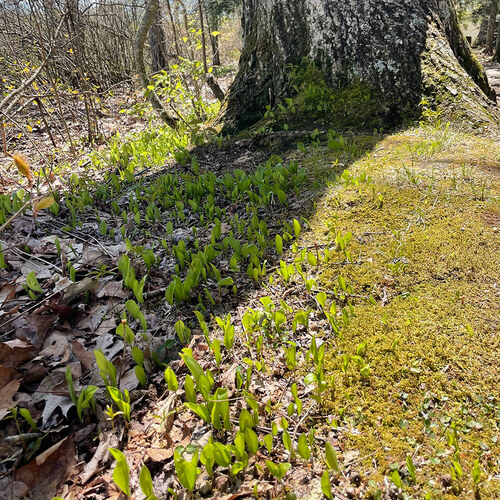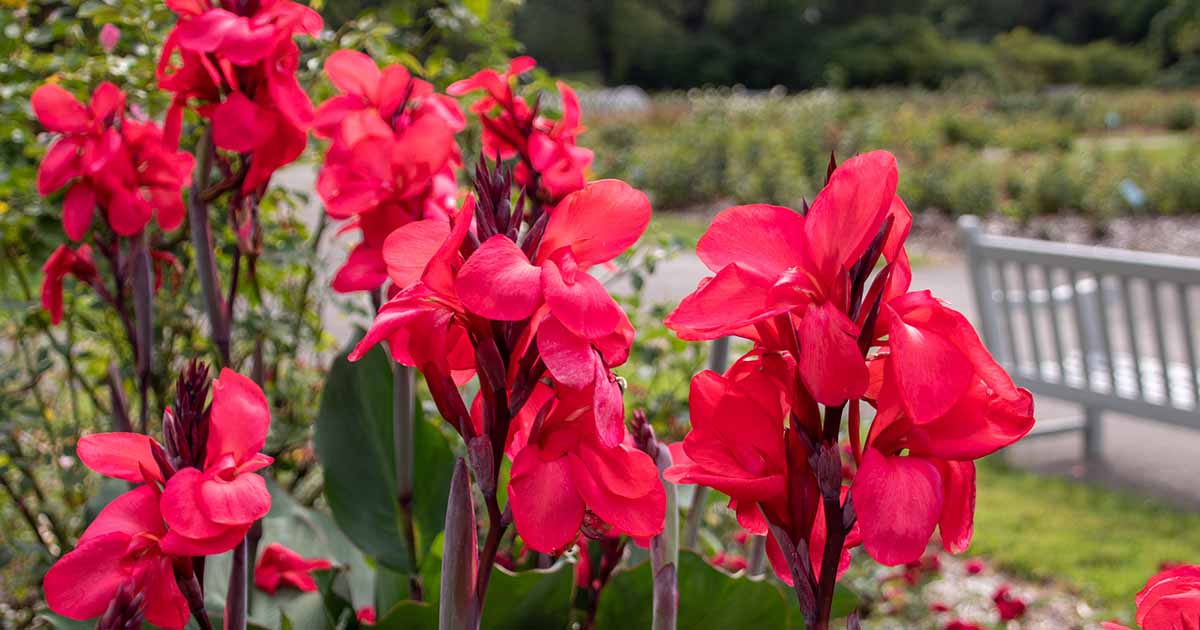Echeverias are a very easy succulent plant to propagate. There are five methods you can use.
1. Rosettes: When your Echeveria plant becomes leggy (stretches for the sun), you can cut the rosettes (baby plant) off the ends of the leggy stems. Leave enough stem to be able to tuck it into some fresh cactus or succulent mix.
2. Stems: You can also use the bits of stems to begin growing new plants. Lay them flat on top of fresh potting mix. Before you know it, they’ll set down roots and start sprouting leaves.
3. Leaves: Every Echeveria leaf has the potential to become a plant. When leaves fall off, you can lay them on top of fresh potting mix, and just like the stems, they will soon set down roots and begin producing little plantlets.
For all of these methods, it’s a good idea to allow the rosettes, stems, or leaves to callus over for twenty-four hours before introducing them to fresh soil.
4. Division: Echeveria is commonly called Hen & Chicks because mature plants often produce multiple babies. It is easy to separate these babies from the parent when repotting and pot them up in individual containers.
5. You can also propagate Echeveria from seed, but it’s rather difficult and quite unnecessary. If you want to grow Echeveria from seed, you can collect seed from the plants’ flowers after they have finished blooming. Alternately, you can order seeds online.
How To Propagate Echeveria Plants
Echeveria is native to South America and southern Mexico. There are many different types of Echeveria. All grow in a rosette formation, but they vary in colors and leaf shapes, and size.
Some stay very small, while others can grow a foot wide. Some have very thin leaves, while others have thick leaves. Some are smooth, and some are fuzzy. Coloration varies from pale green to deep green to shades of blue and maroon.
Regardless of the type of Echeveria in question, as long as you have access to a mature Echeveria plant, you can grow your plants from almost any part of the plant.
Tips for Echeveria Propagation Success
- Always be sure to use healthy plant parts when propagating Echeveria. Choose thick, plump leaves, healthy stems and full, healthy rosettes, vigorous pups. Plants that are damaged or misshapen may not grow well.
- When you remove Echeveria leaves from the parent plant, use your fingers. Choose healthy leaves and twist them gently away from the parent plant.
- Make sure that the leaves you choose include the base where it attaches to the plant’s stem. This is where the roots come from, so you must collect a whole leaf when propagating from leaves. If you are using a stem, try to ensure there is a node (small knot) on it. This is where new leaves and roots will emerge.
- If you’re taking an individual leaf, stem and/or rosette cuttings or pups from a plant at a friend’s house or other location away from home, be sure to take several. There’s no guarantee that every hopeful candidate you take will grow into a plant. Propagation is always a test. Give yourself as much of a chance for success as you possibly can.
- When you get your cuttings home, lay them on a dry towel or paper towel in a warm, dry setting out of direct sunlight. Leave them in the open air for twenty-four hours before introducing them to fresh soil. This will help prevent any problems that might arise from fungal infection. Note that it is not necessary to do this with pups.
Light & Temperature
While growing the cuttings into mature plants, don’t put them in bright light. Instead, place the cutting in an area with good air circulation, consistent warmth, and bright, indirect sunlight.
Remember that Echeverias are succulents, not cacti. For the most part, they do not like full sunlight. Therefore, to consistently warm setting that receives ample amounts of bright, indirect sunlight.
Mature plants like to have between 4 and 6 hours of bright, indirect sunlight daily.
Generally speaking, these plants like temperatures ranging from 65F – 70F. They can tolerate nighttime temps down to 50F.
Watering & Feeding
When rooting Echeveria leaves or stems, start with slightly moist soil. Mist daily to keep it moist until new roots and leaves are established.
If you are rooting a rosette or a pup, you can treat it as a mature plant. Keep an eye on the soil, and when the top inch is dry to the touch, it’s time to water your Echeveria. Use the soak and dry watering method to water thoroughly and then wait until the soil is dry for watering again.
Using a rooting hormone to help your Echeveria develop roots; however, this is not necessary. These plants are very enthusiastic growers and happily develop roots without rooting hormones.
Once your plant is established, you may wonder about fertilizing. Most succulents do not need fertilizing as long as they are in a good potting mix. Repot every year or two to ensure that your plant is getting enough nutrients and has enough room to grow.
If you decide to give your Echeveria a dose of fertilizer, be sure to prepare a one-quarter or one-half full-strength solution. These plants are very light feeders, and too much fertilizer can do more harm than good.
Soil & Transplanting
If you are planting a rosette or pup, plant it in fresh well-drained soil or cactus mix just as if it were a mature plant. Before you know it, it will be one.
If you are starting from stem cuttings or leaf cuttings, you can lay them on top of the soil or cactus mix, and they will do all the work for you.
This method simply mist the soil every few days to prevent it from becoming too dry. New roots should form within the first ten days, and leaves will follow shortly after that.
Once you see roots beginning to form, you can sprinkle a thin layer of fresh soil over them to help them get a good, firm start.
Within a month, you’ll be able to identify new little plants. As the new plant grows, the parent leaf will wither. Once this is done, your plant is mature.
When the plantlets are an inch or so high and have good roots, transfer them to small pots or containers as you wish.
Mature Echeveria plants should be kept in light, airy, well-draining potting mix. You can use a mixture of good quality potting soil and coarse sand with a bit of perlite. Alternately, you can purchase a commercial cactus or succulent mix.
Always plant Echeveria and all other succulents in pots that have good drainage. These hardy plants can take a lot of neglect, but standing in water will lead to root rot.
How Hard is it to Propagate Echeveria?
Just as Echeveria come in different sizes, shapes, and colors, they also come in varying degrees of ease of propagation. Some Echeveria varieties take longer than others, but in most cases, you should see new roots and leaves beginning to develop within the first ten days after you introduce your cuttings to fresh soil.












